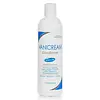What's inside
What's inside
 Key Ingredients
Key Ingredients

No key ingredients
 Benefits
Benefits

 Concerns
Concerns

 Ingredients Side-by-side
Ingredients Side-by-side

Water
Skin ConditioningCetearyl Alcohol
EmollientCetrimonium Chloride
AntimicrobialCocos Nucifera Oil
MaskingParfum
MaskingCetyl Hydroxyethylcellulose
Emulsion StabilisingCitric Acid
BufferingPanthenol
Skin ConditioningPolyquaternium-10
Argania Spinosa Kernel Oil
EmollientHelianthus Annuus Seed Oil
EmollientHydrolyzed Quinoa
Skin ConditioningPaeonia Suffruticosa Flower Extract
Skin ConditioningRosa Centifolia Flower Water
Skin ConditioningSimmondsia Chinensis Seed Oil
EmollientSodium Chloride
MaskingPotassium Sorbate
PreservativeWater, Cetearyl Alcohol, Cetrimonium Chloride, Cocos Nucifera Oil, Parfum, Cetyl Hydroxyethylcellulose, Citric Acid, Panthenol, Polyquaternium-10, Argania Spinosa Kernel Oil, Helianthus Annuus Seed Oil, Hydrolyzed Quinoa, Paeonia Suffruticosa Flower Extract, Rosa Centifolia Flower Water, Simmondsia Chinensis Seed Oil, Sodium Chloride, Potassium Sorbate
Ingredients Explained
These ingredients are found in both products.
Ingredients higher up in an ingredient list are typically present in a larger amount.
Cetearyl alcohol is a mixture of two fatty alcohols: cetyl alcohol and stearyl alcohol. It is mainly used as an emulsifier. Emulsifiers help prevent the separation of oils and products. Due to its composition, it can also be used to thicken a product or help create foam.
Cetearyl alcohol is an emollient. Emollients help soothe and hydrate the skin by trapping moisture.
Studies show Cetearyl alcohol is non-toxic and non-irritating. The FDA allows products labeled "alcohol-free" to have fatty alcohols.
This ingredient is usually derived from plant oils such as palm, vegetable, or coconut oils. There is debate on whether this ingredient will cause acne.
Due to the fatty acid base, this ingredient may not be Malassezia folliculitis safe.
Learn more about Cetearyl AlcoholPanthenol is a common ingredient that helps hydrate and soothe the skin. It is found naturally in our skin and hair.
There are two forms of panthenol: D and L.
D-panthenol is also known as dexpanthenol. Most cosmetics use dexpanthenol or a mixture of D and L-panthenol.
Panthenol is famous due to its ability to go deeper into the skin's layers. Using this ingredient has numerous pros (and no cons):
Like hyaluronic acid, panthenol is a humectant. Humectants are able to bind and hold large amounts of water to keep skin hydrated.
This ingredient works well for wound healing. It works by increasing tissue in the wound and helps close open wounds.
Once oxidized, panthenol converts to pantothenic acid. Panthothenic acid is found in all living cells.
This ingredient is also referred to as pro-vitamin B5.
Learn more about PanthenolWater. It's the most common cosmetic ingredient of all. You'll usually see it at the top of ingredient lists, meaning that it makes up the largest part of the product.
So why is it so popular? Water most often acts as a solvent - this means that it helps dissolve other ingredients into the formulation.
You'll also recognize water as that liquid we all need to stay alive. If you see this, drink a glass of water. Stay hydrated!
Learn more about Water